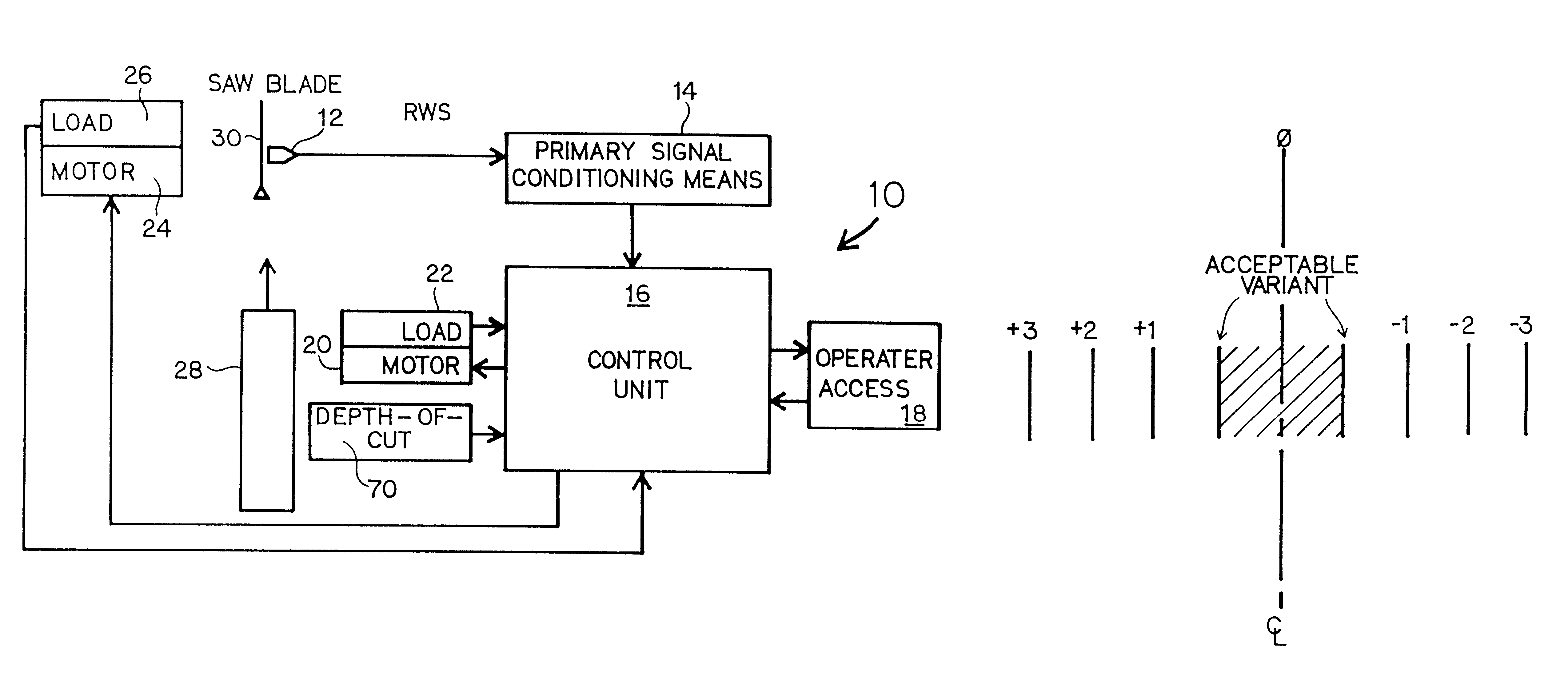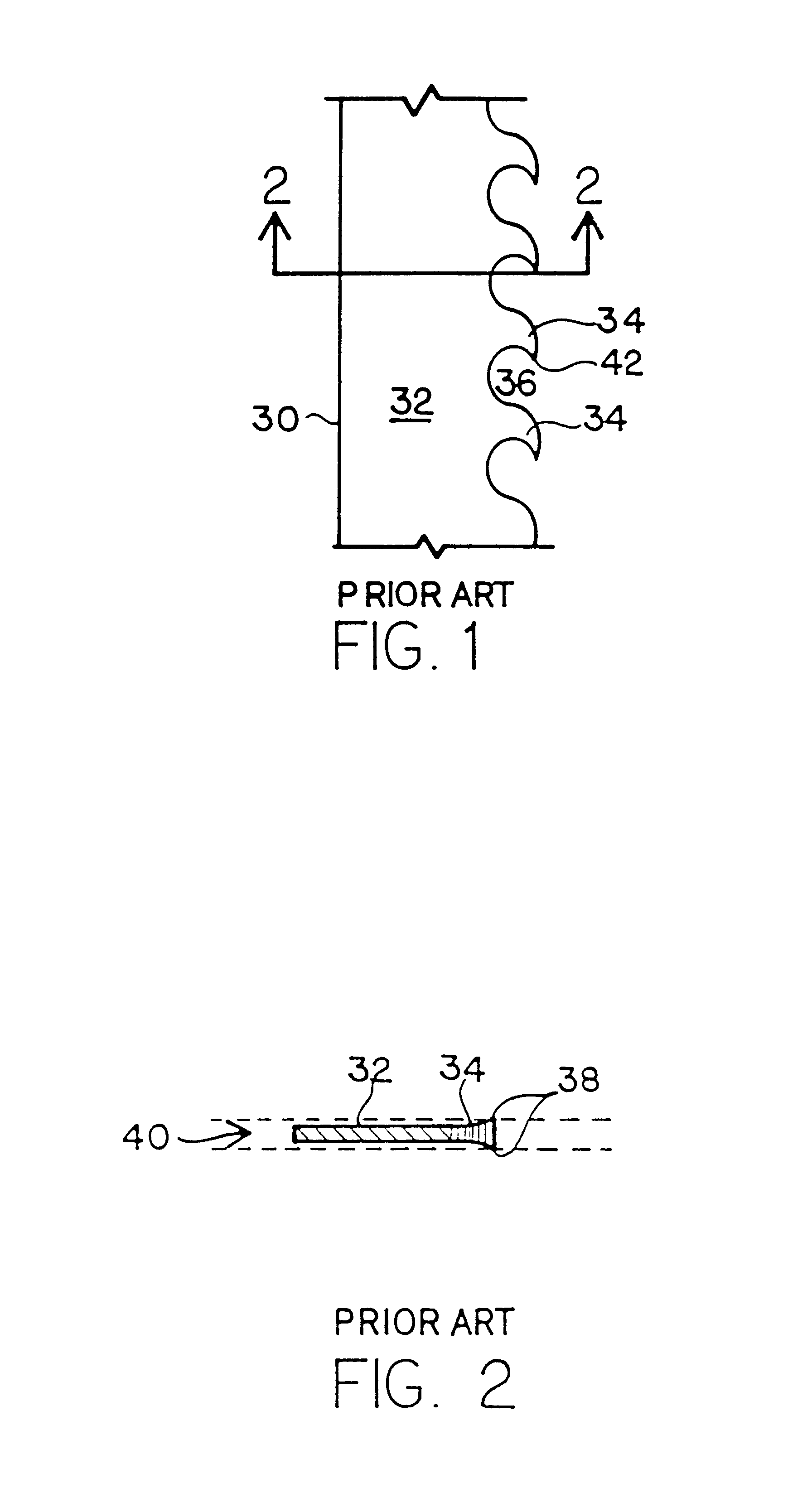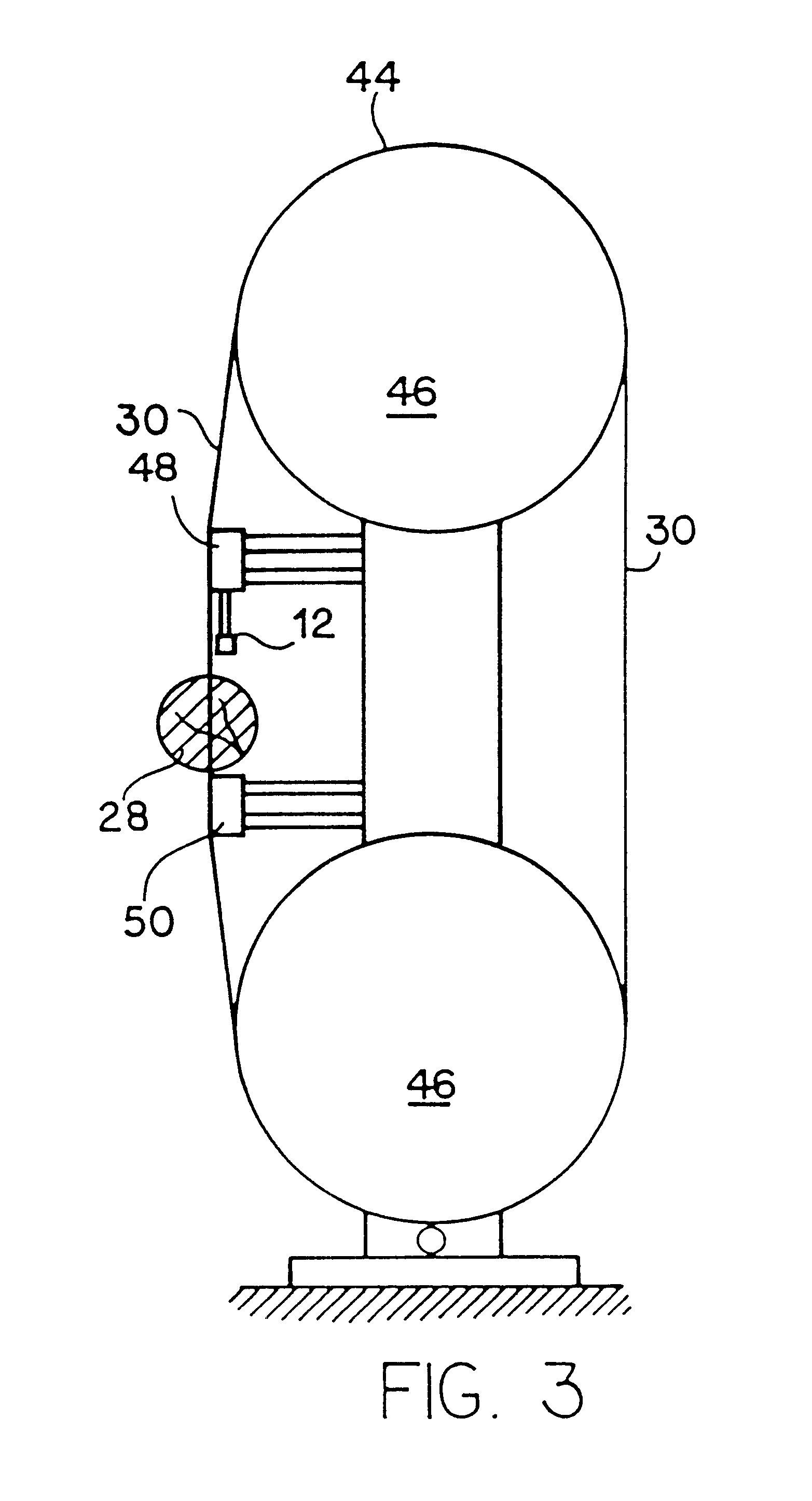Apparatus for controlling work feed rate for cutting wood, metal and other materials
a technology of bandsaw machine and feed rate, which is applied in the direction of program control, metal sawing accessories, instruments, etc., can solve the problems of erratic lateral movement of the saw blade, large waste, and the rate at which the work is fed into the saw blad
- Summary
- Abstract
- Description
- Claims
- Application Information
AI Technical Summary
Problems solved by technology
Method used
Image
Examples
Embodiment Construction
It is an object of the present invention to optimize production of cutting products. To do this, it is necessary to understand the sawblade cutting process and to adjust sawblade rim speed and / or feed speed to ensure that optimal straight light cuts are achieved at the fastest possible rate. Reference is made to prior art FIGS. 1 and 2. Prior art FIG. 1 discloses a section of a band saw cutting blade 30 which is formed of body 32 and teeth 34. The dynamics of band saw cutting will be described in this preferred embodiment in the context of a band saw cutting dimensional lumber from a log or cant. However, it should be understood that the dynamics of cutting with other materials are essentially the same, as are the dynamics of cutting with a radial saw, as opposed to a band saw. The processes in the control system described herein apply equally well to the cutting of other materials, including metal, polymers, rods, silicates, and virtually any material which is capable of being cut....
PUM
| Property | Measurement | Unit |
|---|---|---|
| widths | aaaaa | aaaaa |
| time | aaaaa | aaaaa |
| time | aaaaa | aaaaa |
Abstract
Description
Claims
Application Information
 Login to View More
Login to View More - R&D
- Intellectual Property
- Life Sciences
- Materials
- Tech Scout
- Unparalleled Data Quality
- Higher Quality Content
- 60% Fewer Hallucinations
Browse by: Latest US Patents, China's latest patents, Technical Efficacy Thesaurus, Application Domain, Technology Topic, Popular Technical Reports.
© 2025 PatSnap. All rights reserved.Legal|Privacy policy|Modern Slavery Act Transparency Statement|Sitemap|About US| Contact US: help@patsnap.com



